1. Dental Implants
The implant is designed to function as the root of a tooth, meaning it is placed entirely in the jaw bone, just as your tooth’s natural root is. The top portion of the implant can be a single tooth, a part of a bridge helping to replace multiple teeth, or a component designed to improve a denture or partial denture.Dental implants are made of titanium, one of the most biocompatible materials on the market, which means even if you have a metal allergy you are still likely to be an excellent candidate for implants.
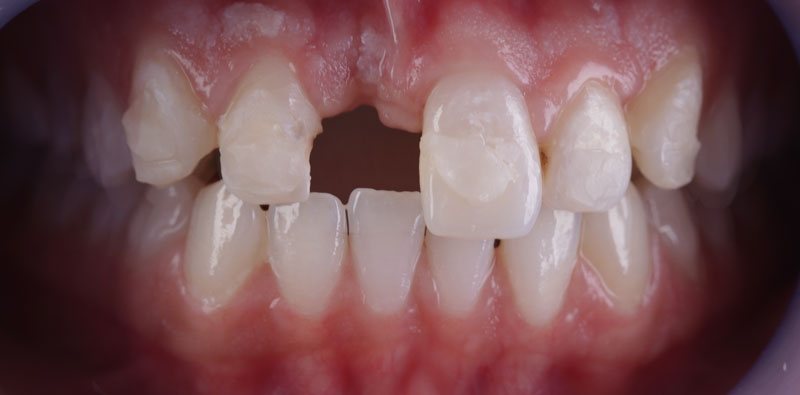
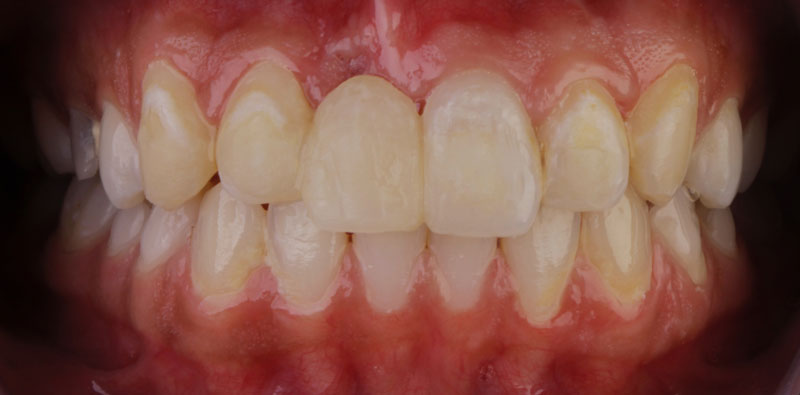
Things you have to know about implants
- No harm to neighbouring teeth: unlike bridges you don’t prepare the teeth next to the empty space. As when you make a bridge the neighbouring teeth are ground down to allow for a 3 unit bridge.
- Long-Lasting: Dental implants are a great investment, usually lasting for 30 or more years, twice as long as other restorations. With proper oral hygiene, dental implants can last for the rest of your life.
- Prevent bone loss and tooth movement: Unlike fixed bridges, dental implants can preserve the health of your jawbone. Once a tooth is lost, the bone in that area begins to atrophy over time because the jawbone is no longer receiving stimulation. Dental implants replace the roots of the missing teeth, mimicking their stimulation of the jawbone and preventing further deterioration.
- Can be changed or updated: The top portion of the implant can be changed or updated throughout the patient’s life. If an implant was first placed to replace a single missing tooth, it can be swapped out to help support a bridge if nearby teeth are later extracted. If many or all of a patient’s teeth end up being removed, the crown or bridge can be changed to a snap to help support a partial or complete denture. This ability to modify an implant helps the patient to continue to benefit from the implant as they age and indications change.
- Looks & Feels Natural: Dental implants are custom made to match the appearance and function of your natural teeth. You’ll be able to eat and speak naturally and won’t feel self-conscious about your smile.
2. Extraction
Here at Mounir Dental Clinic we’ll do everything we can to save your tooth using restorative and conseravtive treatment. Nevertheless, some teeth are too hopeless and too damaged that the only solution we have is to remove them. By using clinical and radiographic examinations we will specify whether we will take it off or not.
If you’re hesitant to get an extraction, you’re not alone. Many find themselves worried about what it will feel like and how well they’ll recover. At mounir dental clinic we guarantee you painless tooth extraction, you won’t even know that your tooth has come out!

3. Wisdom Extraction
With age comes wisdom. Specifically, wisdom teeth. Your mouth goes through many changes in your lifetime. One major dental milestone that usually takes place between the ages of 18 and 25 is the appearance of your third molars.
Historically, these teeth have been called wisdom teeth because they come through at a more mature age. When they come through correctly, healthy wisdom teeth can help you chew. It’s normal to feel a little discomfort when your wisdom teeth appear, but if you have pain, see our dentists immediately.
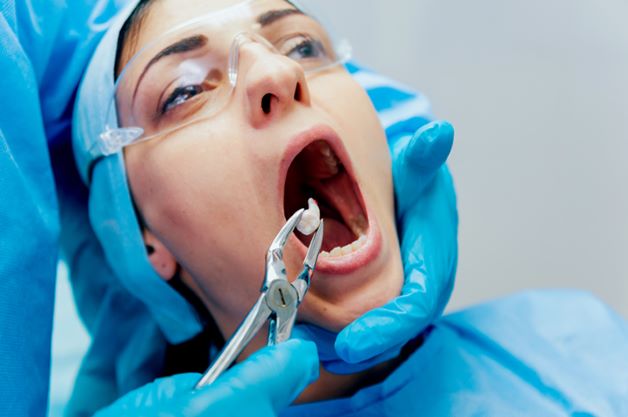
4. Dental Emergencies
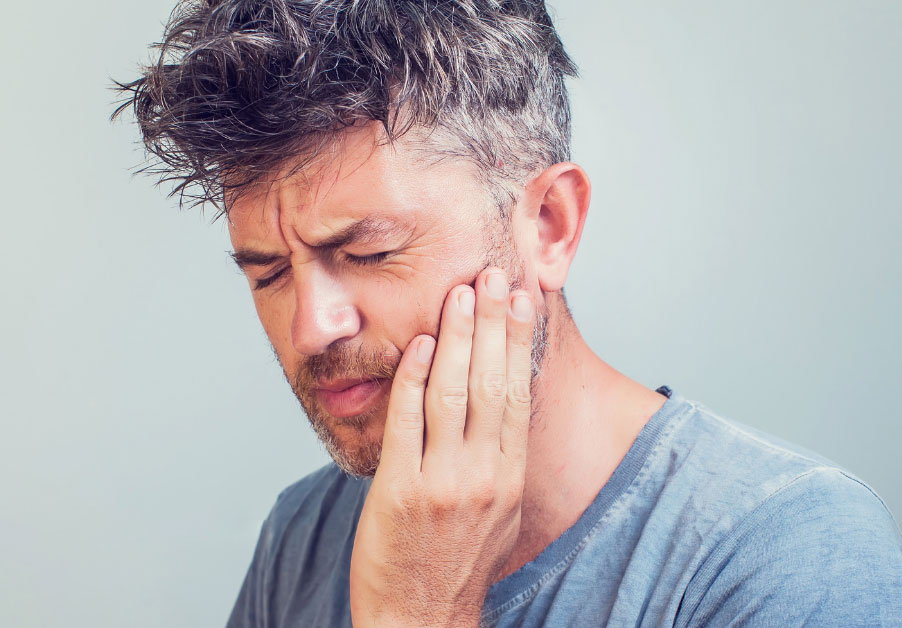
Our team will make the time for you whenever there is an emergency by staying late, shifting appointments and focusing on getting you out of pain! Dental emergencies don’t run on schedule and Mounir Dental Clinic totally understands that!
Dental trauma
Due to sudden, unexpected blows to your teeth, they could fall out of your mouth and that’s when one of our team could clean the tooth and re-insert it in the socket if it’s still intact. you can replace the tooth within 30 minutes, research shows a much higher percentage of keeping your original tooth! Other tips include storing the tooth in saliva (like in your cheek), or milk. You should not wait over two hours to be seen by a dental professional. Another effect of trauma is that your teeth could be fractured and probably you would experience pain, and that’s when we interfere to relieve all your pain.
Broken molars
It is possible to crack your back teeth if you chew on hard food. It doesn’t necessarily have to cause pain, but if it does we are one call away!
Dental abscess
Dental abscess is a dental emergency and should be treated immediately. Dental swellings could spread and become dangerous situations if not treated properly.
5. Periodontal Microsurgeries
Gum Recession treatment
Gingival recession refers to the progressive loss of gum tissue, which can eventually result in root exposure if left untreated. It is most commonly seen in older people (above the age of 40) but the process actually can begin in teenage.
The regular check ups would identify gum recession as it’s difficult to self recognise it.
Here are some symptoms to indicate gum recession:
- Visible roots – This is one of the main characteristics of a more severe case of gum recession.
- Sensitive teeth – as roots are visible.
- Longer looking teeth – actually the tooth’s length is perfectly normal but as there the gums are receding they ought to be longer.
- Halitosis (bad breath), inflammation and bleeding – These symptoms are characteristic of gingivitis or periodontal disease. A bacterial infection causes the gums to recede from the teeth and may cause tooth loss if not treated promptly.
Once the cause of the gum recession has been determined, surgical and non surgical procedures can be performed to stop the progress of the recession, and prevent it from occurring in the future.
The most common causes of gingival recession are:
- Aggressive brushing – Brushing too hard or brushing with a hard-bristled toothbrush can erode the tooth enamel at the gum line, and irritate or inflame gum tissue.
- Poor oral hygiene – So plaque accumulation results and with plaque comes bacterial, lots of them ! and that’s the beginning of the problem.
- Chewing tobacco – Any kind of tobacco use has devastating effects on the entire oral cavity. Chewing tobacco in particular, aggravates the gingival lining of the mouth and causes gum recession if used continuously.
- Periodontal disease – Periodontal disease can be a result of improper oral hygiene or caused by systemic diseases such as diabetes. The excess sugars in the mouth and narrowed blood vessels experienced by diabetics create a perfect environment for oral bacteria. The bacterium causes an infection which progresses deeper and deeper into the gum and bone tissue, eventually resulting in tooth loss.
With Mounir Dental Clinic there are no worries anymore ! because the solution to gum recessions is a wide variety from surgical approaches to non-surgical approaches. FIRST you have to know the cause of gum recession afterwards everything is easy.
For example: if aggressive brushing is the cause then a softer toothbrush and a gentler brushing technique should be used. If poor oral hygiene is a problem, prophylaxis (professional dental cleaning) may be recommended to rid the gum pockets of debris and bacteria. In the case of a severe calculus (tartar) build up, scaling and root planing will be performed to heal the gingival inflammation and clean the teeth.
If the case is severe then a surgery of a more cosmetic or restorative nature may be recommended. Gum tissue regeneration and gum grafting are two excellent ways to restore natural symmetry to the gums and make the smile look more aesthetically pleasing.
Grafting (Soft and hard tissue augmentation)
Bone Grafting
We perform bone graft surgery when there is bone loss resulting from facial trauma (accidents), wearing an ill-fit denture and it can be also due to periodontal disease which is the leading cause.
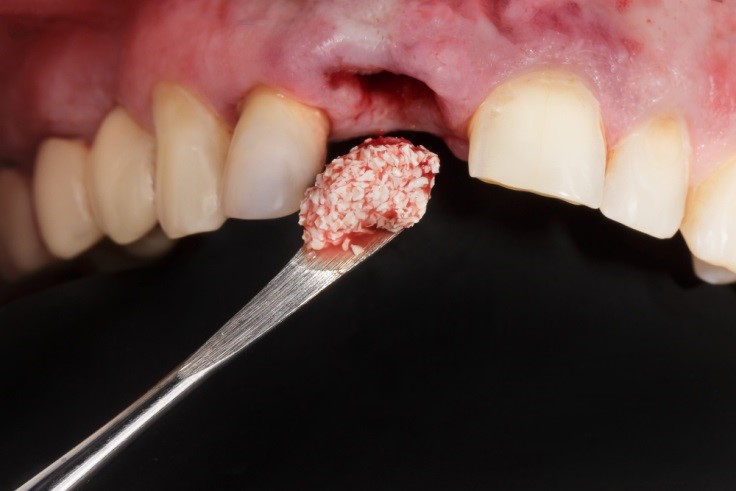
Types of bone grafts:
1) Autogenous: In other words Your Own Bone
In this type of graft the bone is removed from elsewhere in the body and implanted in the mouth.
2) Heterogeneous: The Synthetic type that has many subtypes.
- Allograft: Synthetic bone can be created in the laboratory and used in the bone grafting procedure.
- Xenograft: This is the implantation of bovine (cow) bone. A xenograft is perfectly safe and has been used successfully for many years.
A bone graft may be required to:
- create a stable base for dental implant placement, to halt the progression of gum disease or to make the smile appear more aesthetically pleasing.
- elevate the maxillary sinus membrane (Sinus Lift) so that implants can be securely placed.
- fill in the ridge and make the jawbone a uniform shape (Ridge Augmentation).
- Move the inferior alveolar nerve to allow for the placement of implants (Nerve Repositioning).
Gum Grafting
It’s a soft tissue graft that is performed when we need to cover an exposed root.
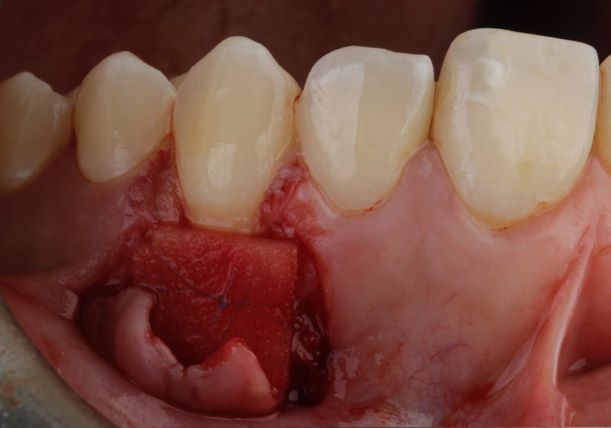
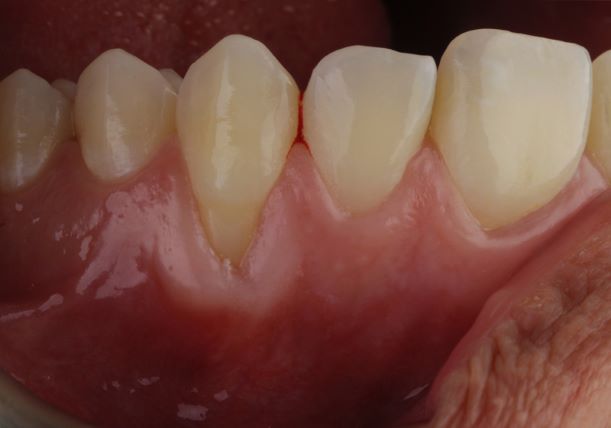
Gum grafting isn’t a big deal in our clinic as we have periodontal specialists, it is just a piece of cake! And procedures are done under Local Anaesthesia and you will feel nothing.
Here are some of the most common types of gum grafting:
- Free gingival graft – This procedure is often used to thicken gum tissue. A layer of tissue is removed from the palate and relocated to the area affected by gum recession. Both sites will quickly heal without permanent damage.
- Subepithelial connective tissue graft – This procedure is commonly used to cover exposed roots. Tissue is removed fairly painlessly from the outer layer of the palate and relocated to the site of gum recession.
Why do we do gum graft? As we all know that gum
- Reduced sensitivity – When the tooth root becomes exposed, eating or drinking hot or cold foods can cause extreme sensitivity to the teeth. Gum grafting surgery permanently covers the exposed root, helps reduce discomfort, and restores the good health of the gums.
- Improved appearance – Periodontal disease is characterized by gum recession and inflammation. Gum recession and root exposure can make the teeth look longer than normal and the smile to appear “toothy.” Gum grafting can make the teeth look shorter, more symmetrical and generally more pleasing to look at.
- Improved gum health – Periodontal disease can progress and destroy gum tissue very rapidly. If left untreated, a large amount of gum tissue can be lost in a short period of time. Gum grafting can stop tissue and bone loss; preventing further problems and protecting exposed roots from further decay.
Platelet Rich Fibrin Membrane PRF
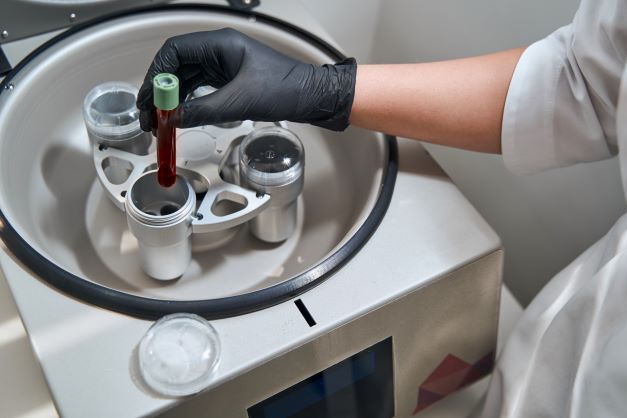
Platelet Rich Fibrin (PRF) can be incorporated into just about every oral surgery procedure; wisdom teeth, tooth extractions, implants, bone grafts, and sinus lifts.
Using PRF speeds up how quickly the surgical site heals by stimulating the body to accelerate it’s normal processes. This causes soft tissue (gums) to close faster and it has Bone Morphogenic Proteins (BMPs) that help create new bone quickly.
A small sample of your blood is taken, then centrifuged to concentrate the healing molecules in a clot in a test tube and it is then used at the healing site. There’s no harm as the clot is entirely yours!
For Reservations: You can call our front desk at (+2) 03 4252166 Sat- Wed 10am – 7pm

